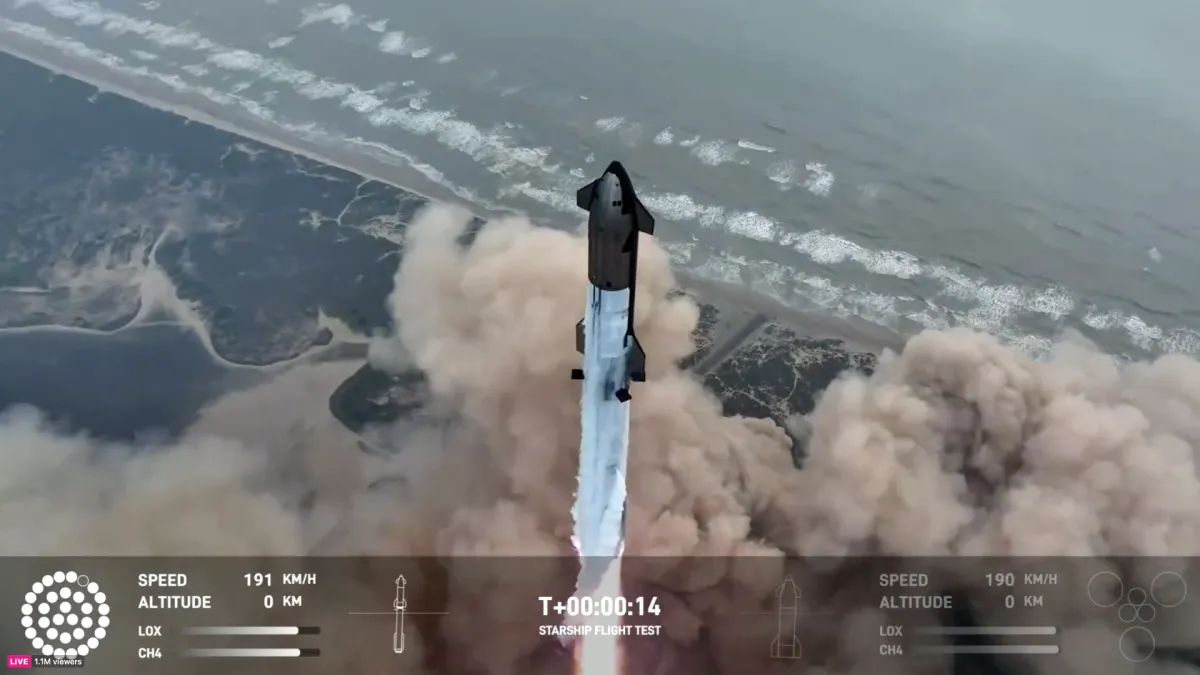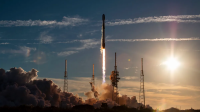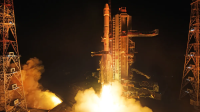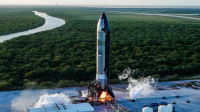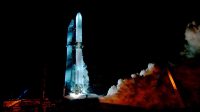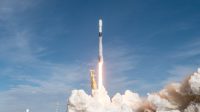SpaceX successfully conducted the fourth test flight of its Starship launch system on June 6, with both the Super Heavy booster and Starship upper stage returning to the surface intact. The launch, which took place at 8:50 a.m. Eastern from the Starbase test site at Boca Chica, Texas, encountered a minor setback when one of the 33 Raptor engines in the Super Heavy booster failed to ignite.
Despite this issue, the ascent proceeded as planned. After stage separation, the Super Heavy booster performed a boostback burn without any further engine failures, a significant improvement over previous flights. The booster then jettisoned the hot staging interstage section, a new step aimed at reducing the mass of the booster for its landing.
During the final descent phase, the booster reignited three Raptor engines for a landing burn, achieving a “landing” in the Gulf of Mexico. This successful landing was a major milestone for the mission.
Meanwhile, the Starship upper stage flew its planned suborbital trajectory without exhibiting the rolling seen on the previous launch in March. Live video during reentry provided dramatic views of the plasma field enveloping the spacecraft.
Despite some damage to one flap, Starship made it through the maximum phase of heating and performed a controlled descent, ultimately landing in the ocean about 65 minutes after liftoff. SpaceX CEO Elon Musk praised the spacecraft’s performance, stating, “Despite loss of many tiles and a damaged flap, Starship made it all the way to a soft landing in the ocean!”
NASA Administrator Bill Nelson also commended the flight, highlighting its importance for the agency’s Artemis lunar exploration campaign. “Congratulations SpaceX on Starship’s successful test flight this morning!” he posted. “We are another step closer to returning humanity to the Moon through Artemis—then looking onward to Mars.”
Looking ahead, Musk indicated plans to attempt to catch the booster with the “Mechazilla” arms on the launch tower during the next flight, following the successful landing in the Gulf of Mexico.
The successful test flight comes just days after the Federal Aviation Administration issued an updated launch license for Starship. The agency also approved a series of exceptions proposed by SpaceX, allowing the company to skip certain investigations in the event of specific failures that do not affect public safety.
However, SpaceX is facing potential legal challenges from environmental groups. SaveRGV, an organization focused on the Rio Grande Valley region of Texas, has announced its intent to sue SpaceX for alleged violations of the Clean Water Act related to its ground systems causing water contamination. SpaceX has not yet responded to these allegations.

